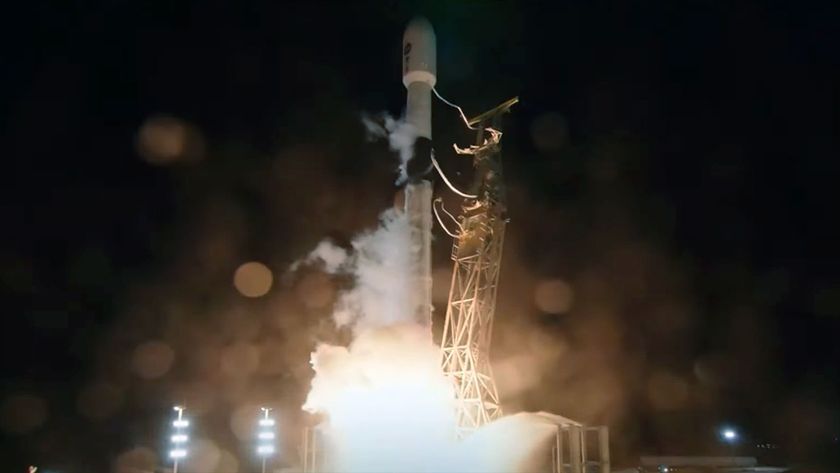NASA Doles Out $7.5 Million for Heavy-Lift Rocket Studies

WASHINGTON ?NASA hopes to lay the groundwork over the next six months fordeveloping anaffordable heavy-lift launch vehicle with $7.5 million in studycontracts itplans to spread across 13 U.S. companies.
The studycontracts, announced Monday (Nov. 8) are NASA's initial response to the2010NASA Authorization Act,which requires the agency to begin work this year on a vehicle capableoflifting at least 70 metric tons to low Earth orbit by 2016.
The bill,which U.S. President Barack Obama signed into law Oct. 11, gives NASAjust 90days to settle on a heavy-lift architecture and report back toCongress.However, Cris Guidi, deputy director of NASA's Constellation SystemsDivisionhere, said the agency is asking lawmakers for more time. [World'sTallest Rockets]
"NASAis currently negotiating some relief on reporting requirementscontained withinthe Authorization Act," Guidi said in a Nov. 9 e-mail, adding that NASAhopes to give each of the 13 companies six months to complete workunder theterms of the fixed-price study contracts.
The studiesare expected to cover options including systems derived from NASA'sspaceshuttle and from the Ares family of rockets that were being developedunder themoon-bound Constellation program, which Obama canceled in the 2011budget blueprinthesent lawmakers in February.
Obamainstead proposed spending up to five years and some $3 billionresearchingpropulsion technologies before choosing a design for the United States'firstexploration-class rocket since the Saturn V. But the authorization billhas putthe heavy-liftrocket back on NASA's near-term agenda.
The studiesare also expected to include alternative architectures that rely ondifferentpropulsion combinations and mission scenarios for delivering astronautsto deepspace destinations such as asteroids and Lagrange points.
Get the Space.com Newsletter
Breaking space news, the latest updates on rocket launches, skywatching events and more!
NASAspokesman Michael Braukus said the agency's Marshall Space FlightCenter inHuntsville, Ala., would manage the study contracts and that the $7.5millionwould come from a funding line appropriated in 2010 for the Ares 5rocket, theshuttle-derived heavy lifter designed under the Constellation program.
Guidi saidthe 13 studies were chosen from responses to a NASA Broad AgencyAnnouncement,or BAA, issued in July.
The specificcapabilities of the heavy lifter called for in the 2010 NASAAuthorization Actappear to dictate a solution based at least in part on the giantsolid-rocketboosters that help lift the space shuttle into orbit. These motors,built byAlliant Techsystems (ATK) of Minneapolis, also were integral to theAres 1 andAres 5 vehicles targeted for cancellation by the White House.
ATK is amongthe companies selected for the latest heavy-liftlaunch vehicle studies. The others are: Aerojet GeneralCorp., RanchoCordova, Calif.; Analytical Mechanics Associates, Huntsville, Ala.;AndrewsSpace, Tukwila, Wash.; Boeing Co., Huntsville; Lockheed Martin Corp.,Huntsville; Northrop Grumman Systems Corp., Huntsville; OrbitalSciences Corp.,Chandler, Ariz.; Pratt & Whitney Rocketdyne, Canoga Park,Calif.; ScienceApplications International Corp., Huntsville.; Space ExplorationTechnologiesCorp., Hawthorne, Calif.; United Launch Alliance, Centennial, Colo.;and UnitedSpace Alliance, Huntsville.
Guidi saidthe studies are expected to meet performance requirements issued by aninternalteam of NASA experts tasked with fleshing out Obama's overhaul of thenation'smanned spaceflight program. Formally known as the Human ExplorationFrameworkTeam, or HEFT, the group was chartered in the spring to determinerequirementsfor sending humans to visit an asteroid by 2025.
In Septemberthe HEFT briefed NASA Administrator Charles Bolden and his deputy on adeepspace exploration plan that rejected some key assumptions of thepresident'sstrategy but which aligned technically with a the NASA AuthorizationAct.
"Thegoal is to transition HEFT's strategies and concepts into systems thatwillactually be built," Guidi said. "Determining what can realisticallybe developed is best done by talking to the people who will do thework."
- NASA'sMost Memorable Missions
- StackingUp the World's Tallest Rockets
- ElectionResults Could Put NASA's Future Under Fire
This articlewasprovided by SpaceNews,dedicated tocovering all aspects of the space industry
Join our Space Forums to keep talking space on the latest missions, night sky and more! And if you have a news tip, correction or comment, let us know at: community@space.com.
Amy Klamper is a space reporter and former staff writer for the space industry news publication SpaceNews. From 2004 to 2010, Amy covered U.S. space policy, NASA and space industry professionals for SpaceNews. Her stories included profiles on major players in the space industry, space policy work in the U.S. Senate and House of Representatives, as well as national policy set by the White House.











